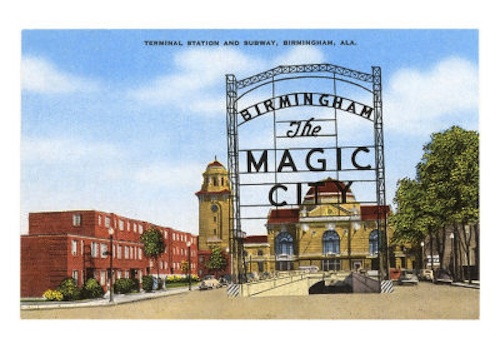Birmingham has a pretty checkered history with another type of segregation, but now here comes some new research around the segregation of college graduates from everyone else within a given metro area. This is vaguely similar to previous research on cities where rich people and poor people tend to cluster together. Let’s start with the methodology of how we came to figure out where college grads tend to cluster together:
To get at this, my Martin Prosperity Institute (MPI) colleague Charlotta Mellander calculated the geographic segregation of highly educated people across the more than 70,000 Census tractsthat make up America’s 350-plus U.S. metros. Using the conventional proxy for human capital, the share of adults with a Bachelor’s degrees or higher, she measured their segregation across tracts within metros. Mellander used an index of dissimilarity, developed by sociologists Douglas Massey and Nancy Denton, which compares the distribution of a selected group of people with all others in that location (the index ranges from 0 to 1, where 0 reflects no segregation and 1 reflects complete segregation). The MPI’s Zara Matheson mapped the data.
OK, so … what did we learn?
The top five metros in terms of most segregated for “college grads” vs. “not college grads” were: Birmingham (and Hoover), Houston, Los Angeles, Columbus, and Memphis. (Memphis is also one of the top cities on that “places where the rich and poor live very separately” link above.)
The top five metros in terms of least segregation between college grads and others were: Orlando, Virginia Beach, Las Vegas, Providence, and Hartford.
Here’s a “heat map” of the results:
Note that the areas with the “highest segregation” — i.e. the dark blue areas — tend to be clustered in the same areas where you see more jobs pop up (the NE corridor, Dallas, the Bay Area, Chicago, etc.) That’s completely to be expected, but why is it dangerous? From The Atlantic Cities:
Metros with greater levels of segregation of college graduates also tend to have greater levels of economic inequality, much more so than for the other types of segregation we have examined in this series. Human capital segregation is closely associated with both wage inequality (.55) and income inequality (.55). More specifically, Mellander found that income inequality explains roughly a third of the variation in the segregation of highly educated people across metros in a simple regression analysis.
And of course, there is a racial component as well:
The geographic segregation of highly educated households reflects long-standing racial cleavages. Highly educated people are more segregated in metros with larger shares of black (.34), Latino (.25), and Asian (.24) populations and less so in areas with greater shares of whites (an even larger negative correlation of -.45).
All this stuff is pretty interesting. At this point, I think I’ve linked/summarized/debated the last six or seven things that Richard Florida has written at The Atlantic Cities; some of this current series he’s doing kind of speaks to the idea of “Where should you live if X-or-Y factor is most important to you?” That’s interesting to me at the moment because I have no idea where I might be living next as I finish up grad school (in all likelihood, this will be tied to a job). Nothing about the “segregation of college grads” stuff is revolutionary — common sense probably would hold most of the areas where that specific segregation is higher — although Orlando as the area with the least segregation is semi-interesting (that said, I think a lot of people that live in Orlando are probably in convention/hotel work, and that doesn’t necessarily require the same background that, say, high-tech work does). I also didn’t mention this, but clearly major college towns — Chapel Hill, Tucson, Ann Arbor, etc. — are highly segregated, because professors/academics/researchers tend to cluster together, and then the second segment is “admin/people that make those universities go.” (That’s generic, but true.)
If you’re interested in a place where knowledge can flow more freely within a community, then, check out New England (Providence, Hartford) or non-Miami Florida (Orlando, Tampa).

